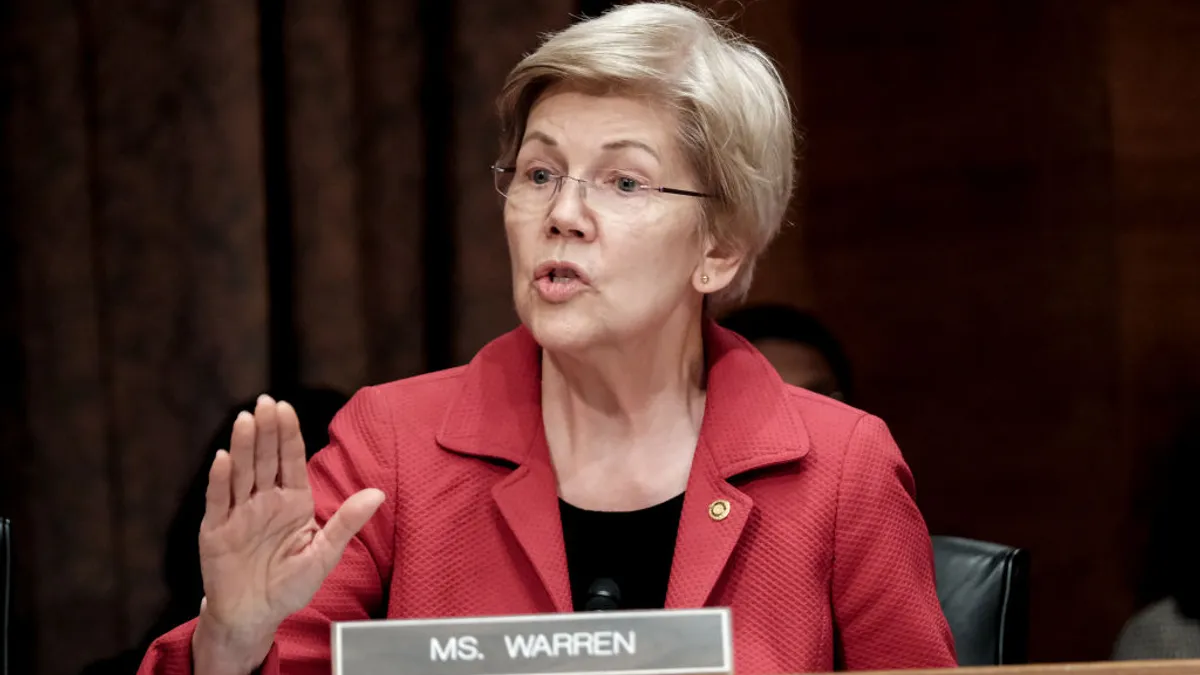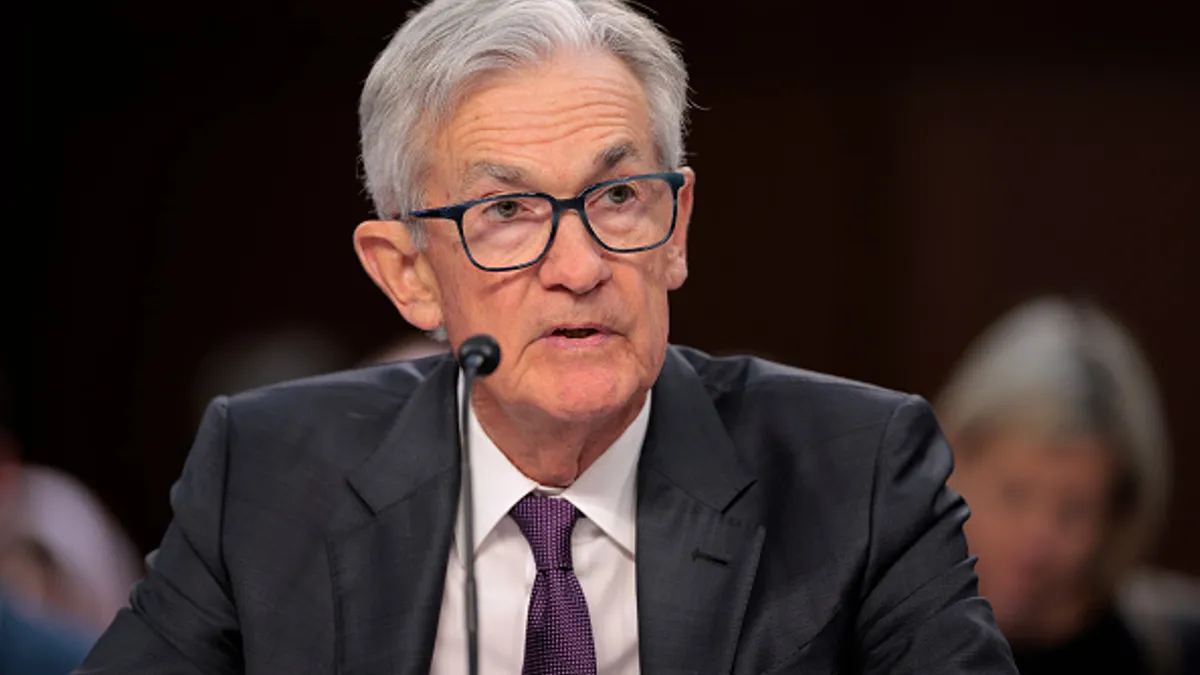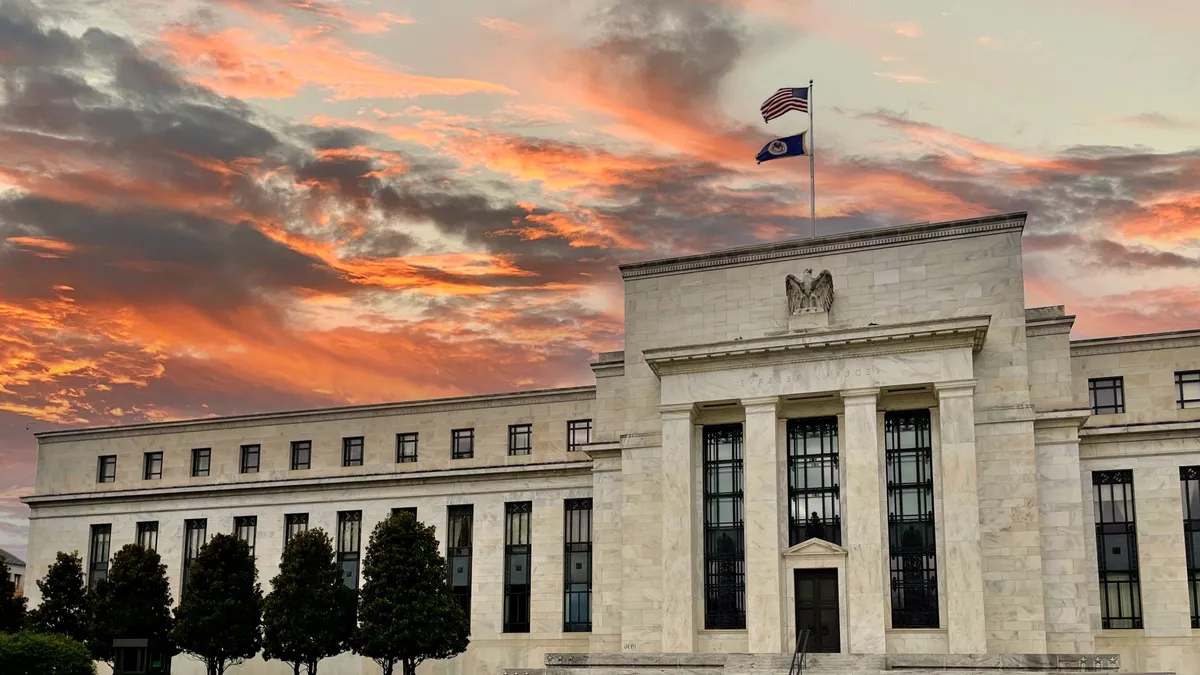With January ushering in a presidential administration viewed as more business friendly and less regulatory risky, analysts said it’s only a matter of time before the industry sees a marked uptick in bank mergers and acquisitions.
Wells Fargo analyst Mike Mayo, in a Wednesday note, dubbed former President Donald Trump’s reelection this week “a regulatory game changer” that’s expected to result in more free markets and less harsh oversight for all banks, especially the largest. That could open the floodgates to more bank combinations.
Citing “tremendous pent-up demand,” Piper Sandler analyst Mark Fitzgibbon said he expects 2025 and 2026 to see robust bank M&A activity. Deal approvals, under a Trump administration, “will speed up markedly and the process will be more clearly delineated,” Fitzgibbon predicted in a Wednesday note.
Brian Graham, a partner at financial services advisory and investing firm Klaros Group, largely echoed that sentiment. “The biggest impact, I think, is going to be on addressing uncertainty about how the regulators will treat smaller bank deals, less than, say, $50 billion in size,” he said.
With about 4,000-plus U.S. banks in that category – many of them subscale – it’s a segment where consolidation is particularly necessary to compete with bigger players, he asserted.
Even though most of those bank deals have ended up being approved under the Biden administration, merger review processes have taken longer than during the first Trump administration, Graham said.
The uncertainty tied to that prevents bank management teams, boards and shareholders from moving forward with mergers, so a speedier process – whether the answer is a yes or a no – is beneficial, he added.
Even after Trump takes office, personnel shifts within bank regulatory agencies won’t happen overnight, but “that mood shift is going to happen very quickly in bank world,” Graham said.
Among banks under $50 billion in assets, Graham expects to see a “very marked pick-up in the number of announced transactions,” some of which may have been under consideration pending the outcome of the election.
Others expect Trump’s win spurs more activity among the next size up: Peter Dugas, executive director of financial services consulting firm Capco, thinks mid-sized banks with between $50 billion and $100 billion in assets are likely to engage in more M&A going forward.
Dugas also said he expects the Office of the Comptroller of the Currency and the Federal Deposit Insurance Corp., which each recently issued updated merger review guidance that applies greater scrutiny to some bank deals, will withdraw that guidance once their leadership shifts under a Trump administration.
The FDIC’s policy update means the agency takes a harder look at deals that would create a bank of $100 billion or more in assets; the OCC’s rule eliminated provisions related to expedited review.
The Justice Department under Trump may also rescind its recent update to bank merger review guidelines, Dugas predicted.
Trump’s win is also likely to be a positive for Capital One’s proposed $35.3 billion acquisition of Discover. The merger, announced in February, is under consideration by the Federal Reserve and the OCC; the DOJ, which has been involved in the review, could sue to block the deal.
Capital One CEO Richard Fairbank has said the company expects the deal to close in early 2025. A second Trump term may facilitate the deal and reduce the risk that it doesn’t get approved, Graham said.
Noting the potential for more M&A activity under Trump, UBS analyst Erika Najarian pointed to a post-election meeting this week with JPMorgan Chase CEO Jamie Dimon, who indicated the biggest U.S. bank is prepared for “emerging competitors.”
“We wonder if potential industry consolidation could see new trillion dollar asset banks emerge?” she wrote in a Thursday note.
Notably, though, Vice President-elect JD Vance has praised the way Federal Trade Commission Chair Lina Khan has taken aim at big tech monopolies, Bloomberg reported.
Even if the bank regulatory environment seems more conducive to deal-making, Joe Silvia, partner at law firm Duane Morris, said he has a sense “that large deals will face significant scrutiny, regardless of the outcome.”
Graham, too, expects the Trump administration’s perspective on M&A among the very biggest banks to mirror the Biden administration’s.
It’s the outlook for lenders between $50 billion and $250 billion in assets that’s less clear at the moment, he said.
Although likely to be less negative than the Biden administration, “the outlook of the Trump administration on those kinds of transactions – a mid-sized regional and another mid-sized regional – I think remains to be seen,” Graham said. It’ll be “very contingent on the people who are appointed to key positions” at the FDIC and OCC, he noted.
Piper Sandler analyst Scott Siefers wrote in a Wednesday note that Trump’s win puts M&A “back into the discussion” for large regionals, where it has been “largely nonexistent” the past few years. M&A interest is likely to “move further up the list of questions” for the likes of Fifth Third, Huntington and PNC, he added.



















